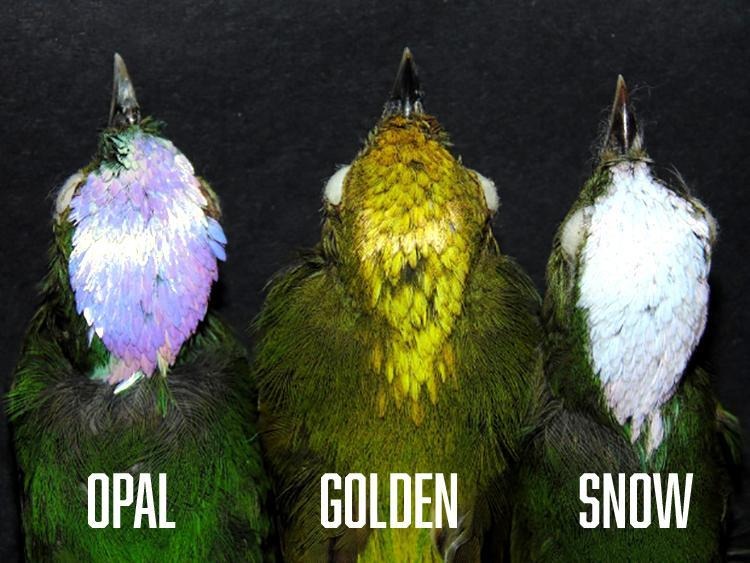Amazon's First-Ever Hybrid Bird Confirmed
After extensive research a team have revealed their discovery: the very first hybrid bird species ever found in the Amazon rainforest. This bird is known as the golden-crowned manakin, so called for its crown of yellow feathers. This bird was born of two other birds in the manakin clade – that is, group of creatures with a single common ancestor. This bird is tiny – the meaning of its Middle Dutch root word mannekijn is "little man."
Parental Pairing
The Manakin bird clade is separated into 60 species, all of which live in the American tropics. Two of these species mated to create a new hybrid bird. One went by the name opal-crowned manakin, while the other was a snow-capped manakin. These birds are told apart by their brightly colored head-top feathers.
• Parent: opal-crowned manakin, iridescent crown feathers
• Parent: snow-capped manakin, white crown feathers
• Hybrid Offspring: golden-crowned manakin, yellow crown feathers

A hybrid is an organism which was spawned by two separate species. Once spawned, the organism must be unable to breed with either of the species from whens it spawned. The opal- and snow-capped manakin species must have created more than one golden-crowned manakin for the golden-crowned manakin to reproduce and survive.
Crucial Timing
"Most Amazon bird species diverged from their most recent relative around 1.5 to 4 million years ago, so these are all young birds by comparison," said Professor Jason Weir, senior author of the research.

The researchers found that the parents diverged from one common ancestor around 300,000 years ago, then mated to create the hybrid around 180,000 years ago. This hybrid species was first discovered in 1957, then again in 2002, and wasn't confirmed as a hybrid species until 2017.
The rarity of this species is extreme, especially given the very small chances that these parent species would mate in the first place. "Without geographic isolation, it's very likely this would never have happened because you don't see the hybrids evolving as separate species in other areas where both parental species meet," said Weir. The paper indicates that geographic isolation likely happened during an ice age, when rainforests grew smaller and breeding became vital for the survival of the clade.
Coloration
If you've got a bucket of white paint and a bucket of opalescent paint, and mix them together, you don't get the color gold. The mixture seen in the modern golden-crowned manakin isn't the same as the first golden-crowned manakin ever born.

ABOVE: "The male golden-crowned manakin has evolved yellow feathers, likely as a way to attract potential female mates." University of Toronto Scarborough
"The golden-crowned manakin ended up with an intermediate keratin structure that does a poor job of making either the brilliant white or the reflective iridescence of the parental species," said Weir. It was only after thousands of years of evolution, bringing about a lovely bright yellow. Without such a bright color, this hybrid would more likely have died out not many generations after it was first created.
OF NOTE: There's a bird called Golden-Head Manakin that's quite different from the Manakin we're talking about today. It has a much more all-encompassing golden head, and isn't a hybrid at all!
Rarity
Again, the rarity of this bird can scarcely be understated. Only a few have been photographed and even fewer have been in captivity or found deceased in good enough condition to consider keeping in a natural history museum. The image you see at the head of this article comes from Museum für Naturkunde Berlin, and is filed as specimen 59.27. This image comes from SV Wikipedia.
For more information on this research, see the Proceedings of the National Academy of Sciences of the United States of America. There, the paper can be found with code DOI:10.1073/pnas.1717319115 with the title Hybrid speciation leads to novel male secondary sexual ornamentation of an Amazonian bird. This paper was authored by Alfredo O. Barrera-Guzmána, Alexandre Aleixo, Matthew D. Shawkey, and Jason T. Weir.
